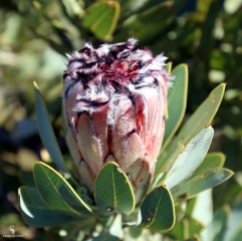India House – Bastiaanskloof Reserve
In 1846, Andrew Geddes Bain, Road Inspector for the Cape colony, discovered a ravine between the Limiet and Slanghoek mountains that could provide a gateway from the Cape to the northern territories. The 18 km long dirt road, now tarred and known as Bainskloof Pass, took just four years to complete with the help of a relatively small group of unskilled, convict labourers.
The historic Bainskloof Pass seem to be jinxed though, as every time we drive this route it rains – meaning driving through this dramatic mountainous landscape in low hanging clouds that adds a moody ambiance to these already austere rocks. Our journey to India House was no exception. The rugged Limietberge were once again covered in thick fog and the rain was coming down in bucket loads.

Although rain normally doesn’t bother me too much, staying indoors in a holiday cottage can sometimes become a little claustrophobic. I shouldn’t have worried about that for our stay at India House, set in the middle of Bastiaanskloof Reserve. Staying with just Paul and myself in this spacious three bedroomed holiday house, we were spoilt for choice between two large, identical en-suite master bedrooms with bath plus in- and outdoor showers, or a twin (children’s) bedroom with en-suite shower room.
India House is probably the most comfortable, lavish and well-equipped self-catering unit I have ever experienced. The lounge, dining room and kitchen is a huge open-plan area. The lounge part is filled with comfy sofas to sink into with a good book in front of the oversized open fire. The kitchen is better equipped than my kitchen at home, to be honest that doesn’t mean much, but it truly has all the cooking gadgets you could wish for, so foodies this is your dream stay! The cherry on my proverbial cake was their Gaggenau barista coffee machine. I thought I’d died and gone to heaven!
Fortunately, the “four seasons in one day” Cape weather is not a myth and overnight the clouds had lifted. Waking to a bright blue sky and surrounded by the breathtaking scenery of Bastiaanskloof Reserve is the best part of staying at India House. This 2,500 ha of Fynbos, a mixture of mostly Montane and Lowland Fynbos with some small patches of Afro-montane forest, is part of the diverse Cape Floral Region UNESCO World Heritage Site. It comes as no surprise that the camera traps on the reserve have snapped pictures of 35 species of mammals, including five Cape leopards (individuals), 250 bird species have been identified, and over 1,500 species of plants recorded. A piece of paradise a mere 1.5 hrs drive from Cape Town.
My favourite personal find on the reserve is the Waboom or Wagon tree (Protea nitida). It is known by this common name since 1720, as this tree-sized Protea was large enough to produce wood for wheel rims and brake blocks for the Voortrekkers’ ox-wagons. Tit-bits of information like this get my imagination going. I envisage an ox-wagon with mum, dad and three kiddies being hauled up Bainskloof Pass. Pots and pans clattering inside the wagon, while dad tries to dodge the larger rocks. Wheels getting stuck in potholes and spokes breaking. Despite its abundant and diverse historic use, the Waboom is fortunately still plentiful on Bastiaanskloof Reserve.
Your stay at India House can be fully self-catering or you can opt for (part) catered for by their private chef. Coming back to India House after a long walk on the reserve, the scenic Haemanthus hike to the bushman’s cave and waterfall, and finding a scrumptious home-made dinner fully prepared, waiting to be reheated and devoured, is a most welcome treat.
























Pingback: Reflections on 2016 | Green Girls in Africa